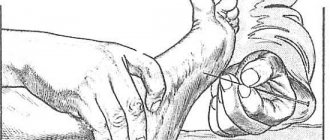Unfortunately, children are most often exposed to various diseases. Sometimes this happens due to the negligence of doctors, sometimes due to injuries or hereditary pathologies. You need to monitor the health of the little man from his first breath, because if you do not notice the symptoms of West syndrome (West syndrome) in time, the consequences will be irreversible. And if your baby starts having frequent seizures, do not resort to traditional medicine, but immediately consult a doctor. You need to immediately understand what West syndrome is, what seizures are, and how to help your child so that his life in the future is normal and healthy.
West syndrome - what is it?
West syndrome in children manifests itself at an early age, but no later than four years. This rare form of epilepsy was first described by a doctor who observed his son's symptoms, and his work allowed the medical world to study the disease, so it is not the final verdict today. Children born with disabilities or injured after birth are at risk for this syndrome.
West syndrome (West) is an age-dependent epileptic syndrome belonging to the group of infantile epileptic encephalopathies (non-inflammatory diseases of the brain)
The following factors can provoke it:
- birth injuries;
- hypoxia during fetal development, during childbirth;
- infections inside the womb;
- congenital malformations of the brain;
- postnatal ischemia;
- encephalopathy;
- asphyxia;
- abnormalities at the genetic level;
- tuberous sclerosis;
- meningitis;
- neurofibromatosis;
- tumors;
- poor metabolism;
- heredity.
An experienced doctor will immediately identify a predisposition to West syndrome.
Features of the pathology
The disease is named after the English doctor who diagnosed it in his son. West syndrome is manifested (discovered) mainly in infants and is characterized by paroxysms (intensification of existing disorders) and regularly recurring individual spasms, called infantile.
In the first years of study, this disease was classified as generalized epilepsy and was not considered an independent pathological process. Over time, it was proven that West syndrome is a separate type of disease. It became possible to draw this conclusion due to improvements in equipment (CT, MRI, PET) for neuroimaging.
Today, this pathology is very rare and, according to statistics, only 2% of all children suffering from epilepsy suffer from it. Boys are more likely to suffer from this disease and it is diagnosed around 4-6 months. By the age of 3, the pathology develops into other types of epilepsy.
West syndrome: signs
The first symptom may be the baby's constant crying, but at this age the cause may be colic, so you should be wary if the child has:
Most often, the first sign of West syndrome is the appearance of myoclonic and/or tonic seizures in children.
- problems with fixing his gaze (he does not look at you or at any objects around him);
- muscle flaccidity;
- lack of psychomotor development;
- spasms are present.
In rare cases, against this background, cerebellar syndrome may appear, which is characterized by trembling of the fingers, dizziness, flabbiness and lethargy of the muscles, difficulty in performing complex and fast movements.
Children with this pathology are developmentally delayed, so if treatment is not started in time, this problem will haunt the child throughout his life.
Encephalopathy
Pathology unites a group of diseases caused by disruption of the brain, which are based on non-inflammatory etiology. During the process, neurons die and the synapse (connection) between them is disrupted. Encephalopathy depresses the central nervous system, which leads to inhibition of the child’s development and mental abilities. The disease is characterized by the following symptoms:
- anxiety, headache, irritability, tearfulness;
- sleep disturbance, inversion is manifested by insomnia at night and lethargy during daylight hours;
- deterioration or complete loss of appetite;
- loss of short-term memory;
- panic attacks (fear of insects, closed spaces, fear of being alone).
Children under 3 months of age may develop hydrocephalus, enlargement of the brain and head size due to poor blood flow.
Forms of the syndrome
West syndrome is one of the severe forms of epilepsy, so its most characteristic symptom is spasms.
They are divided into two types:
- Myoclonic. Small and infrequent twitching of individual parts of the body, face or torso.
- Tonic convulsions grow out of myoclonic ones after some time. With them, the muscles contract more often and for longer. The baby can nod his head, fold himself in half, shrug his shoulders and bend/extend his arms.
These seizures can be triggered by touch, loud noises, while waking up or falling asleep, or by light stimulation, as in normal epilepsy. The attacks are serial in nature, the interval between them does not exceed 1 minute. During spasms, the child may suddenly fall, and after it becomes sleepy and lethargic, immediately falls asleep.
Seizures may be triggered by tactile stimuli or sudden loud noises
Doctors also note three variations of the syndrome, which differ in the nature and level of damage to muscle tissue:
- cramps of the back of the head (the head is thrown back in short series and intervals);
- nodding cramps of the hands;
- spasms of the whole body: in this position, the arms are pulled behind the back or thrown to the sides, and the head is bowed forward.
Why do spasms occur? Due to poor communication between the cortex and brainstem, communication between the brain and the adrenal glands is disrupted. As a result, the hypothalamus produces excess amounts of corticoliberin. This hormone in large quantities provokes muscle spasms.
Infantile spasms
Infantile spasms are a type of non-inflammatory disorder of the normal functioning of the brain, characterized by sudden contractions of muscle tissue in the upper body. Such spasms are classified as epileptic encephalopathy. Their peculiarity is that they are extremely short in duration, but the number of involuntary muscle contractions varies from ten to two hundred spasms for one seizure. The number of seizures can reach up to ten per day.
Such spasms in children begin with changes in behavior: the activity of movements decreases, the humming stops. A spasm develops, affecting either one side of the body or the whole body, the head deviates, the eyes are diverted to the side.
There are no age criteria for the disease. Seizures can begin immediately after the birth of a child, and can appear in adulthood.
Diagnosis and treatment
At the first signs, you need to show the child to a pediatrician and a neurologist so that he can schedule consultations with different doctors. After the examination, you will have to undergo a number of doctors and examinations in order to make an accurate diagnosis, since West syndrome has many common symptoms with various childhood diseases.
The disease quickly progresses from the myoclonic to the tonic stage, so it is necessary to provide the baby with adequate and rapid treatment. It includes:
- hormonal therapy;
- surgery if the cause of the syndrome is a tumor or tuberculous sclerosis;
- drugs that improve brain activity;
- antiepileptic drugs.
Treatment should be carried out under the supervision of a neurologist, when using hormonal drugs - in a hospital setting
Conversations are being held with parents, because they must understand how to care for their child during this difficult period. As was said, pathology inhibits psychomotor development, and treatment for it does not provide one hundred percent guarantees that the developmental delay will not be sustainable.
Drugs
The main method of therapy to eliminate the disease is the prescription of the steroid drug “Vigabatrin” with the hormone ACTH. The pathology is treated under the strict supervision of a doctor, because the medicine has serious side effects. Medicines are selected according to the patient’s age:
- Relieving seizures: Clonazepam, Epilim, Topiramate, Clobazam.
- Hormonal drugs - Tetracosactide, Hydrocortisone.
- Vitamin B6 - “Pyridoxine”.
- Glucocorticosteroids - Prednisolone, Dexamethasone.
- Products based on valproic acid.
Treatment is considered effective if the frequency of attacks decreases during the course. With adequately selected therapy, the baby will develop fully in the future, relapses will disappear, and by the age of 4 West syndrome will go away completely.
Treatment of children with West syndrome
With timely professional assistance, good results can be achieved in more than half of the cases, but the success of therapy does not depend only on well-chosen medications and therapy. The causes of the disease, the form of the syndrome and the degree of brain damage play a major role in recovery.
The child is treated as an inpatient, and during this period, drug treatment is most effective. At the time West described this syndrome, there was no known cure for this pathology, and it was considered incurable. But in the modern world there are a number of drugs that not only stop the disease, but can also prevent relapses.
Anticonvulsants reduce the number and intensity of spasms, these include:
- Valproic acid;
- Clonazepam;
- Nitrazepam;
- Topiramate.
In some cases, vitamin B may benefit the patient instead of anti-seizure medications.
Hormonal therapy is prescribed in combination with basic antiepileptic drugs
In addition to treating seizures, it is also necessary to focus on mental, physical and psycho-emotional development. This pathology inhibits psychomotor development, so doctors prescribe medications for children that normalize blood supply to the brain and improve metabolism. They should not be consumed alone as they may cause epileptic seizures due to brain stimulation.
Exercise therapy
Physical therapy for children with infantile spasms is vital. With its help, muscle motor abilities are restored and motor skills are mastered. Exercise therapy is designed to enhance the effect of therapy. Complex treatment helps the baby to develop sitting, standing, and walking in a timely manner.
The procedure is carried out with the permission of the doctor by an experienced rehabilitation therapist. An unskilled approach can worsen the child’s condition and contribute to an increase in the frequency of seizures. Classes with specialists are recommended to help develop fine motor skills and speech.
Predictions and prevention
If medical care was provided on time, the prognosis is very good. If treatment was not carried out in the first two months, then the chances of life are significantly reduced, so timely contact with a pediatrician is the main concern of parents. Sometimes West syndrome can disappear without drug treatment, or it can transform into more serious forms of epilepsy.
The prognosis is directly related to the form of the syndrome. In the idiopathic form (when there is no obvious cause of the pathology), the baby can be cured with virtually no harm to his mental abilities.
For the symptomatic form, the prognosis is much worse - the chance of life is 25% with the possibility of developmental consequences.
There is no way to prevent the pathology, but a pediatrician can identify the risk group and warn parents about the possibility of West syndrome.
Story
In 1841, the English pediatrician William James West (1793–1848) wrote a letter to the editor-in-chief of the British journal The Lancet, where it was published. The letter was entitled: “On the specific form of infantile paroxysms.” William's son suffered from an unknown illness from the age of four months.
In the letter, Dr. West described his son’s seizures as “tilts.” The child bowed his head to his knees, and then his body completely relaxed. The attack could last up to 2-3 minutes and include up to 20 “tilts”, the intervals between them lasting only a few seconds. The doctor observed such attacks in the boy up to 3 times a day. In his letter, the pediatrician asked his colleagues for help. At the time of writing the letter, the boy was about a year old, and he could no longer acquire new skills and did not know how to move his limbs, never cried or laughed, looked indifferent, could not support his body in an upright position or hold his head on his own. By 11 months, the boy’s seizures began to resemble generalized tonic ones.
Forecast
Is a complete cure possible? The prognosis for recovery depends on how timely and adequate the prescribed treatment was . So, if the child received help in the first weeks after the onset of signs of illness, the chance of recovery (long-term remission) is very high.
However, motor impairment and intellectual retardation may persist for a long period of time.
If you delay treatment , the disease will progress, and over time there is a high risk of relapses.
Disorders with similar symptoms
Symptoms of the following disorders may be similar to those of West syndrome. Comparisons can be useful for differential diagnosis:
Epilepsy is a group of neurological disorders characterized by abnormal electrical discharges in the brain. It is characterized by loss of consciousness, convulsions, confusion and disturbances of the autonomic nervous system. The attacks are often preceded by an aura, a feeling of restlessness, or sensory discomfort; the aura marks the onset of seizures in the brain. There are many different types of epilepsy, and the exact cause is usually unknown. West syndrome is a type of epilepsy.
Lennox-Gastaut syndrome (LGS) is a rare type of epileptic disorder that occurs in infancy or early childhood. The disorder is characterized by seizures and, in many cases, abnormal delays in the acquisition of skills that require coordination of mental and muscular activity (psychomotor delays). People with the disorder may experience several different types of seizures. Lennox-Gastaut syndrome can be caused by a number of different disorders or conditions.
Myoclonic seizures (fits) - seen in numerous types of epilepsy, ranging from myoclonic epilepsy of infancy to Dravet syndrome or myoclonic astatic epilepsy, and are often confused with infantile spasms. The seizures involve rapid jerking of the arms and legs, faster than infantile spasms of childhood, and sometimes occur individually rather than as in West syndrome, which tend to occur in clusters.
Because epileptic spasms are very subtle seizures with small short movements of the torso or arms, it is easily confused with gastroesophageal reflux and other types of non-neurological diseases.
Myoclonus is a neurological movement disorder that causes sudden, involuntary muscle contractions. There are many different types of myoclonus, including hereditary ones. Other causes include lack of oxygen, viruses, malignant neoplasms and damage to the central nervous system, as well as medications and metabolic disorders.











